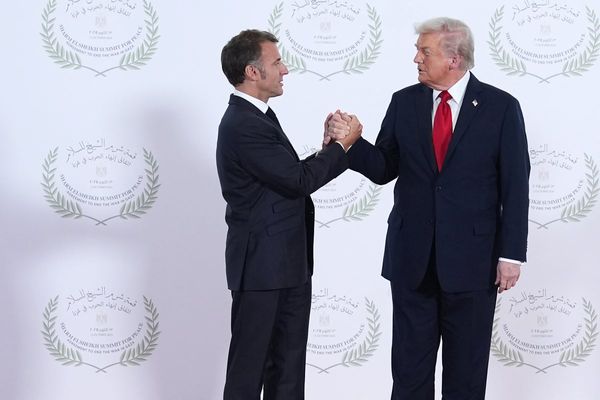
Sixteen people were killed and more than 400 injured in Kenya on Wednesday as police cracked down on anti-government protests. Most of the victims were shot, rights groups said, in the worst day of unrest since last year’s deadly demonstrations over tax hikes.
Thousands of people took to the streets to mark one year since crowds stormed parliament during protests that left more than 60 people dead.
In the capital Nairobi, police used tear gas and water cannons to disperse protesters, according to news agencies. Some demonstrators clashed with officers.
Irungu Houghton, head of Amnesty Kenya, said 16 people had died by 8.30am. The death toll was also confirmed by Amnesty’s global office and the government-funded Kenya National Commission on Human Rights (KNCHR).
“Most were killed by police,” Houghton said, adding that at least five had been shot.

An official at Kenyatta National Hospital said dozens of injured people were brought in from the protests.
The official said “107 admitted, most with gunshot injuries”, referring to both rubber bullets and live rounds.
KNCHR said all the reported deaths were “allegedly from gunshot wounds”. It said “over 400 casualties have been reported, including demonstrators, police officers and journalists”.
In a statement, the watchdog also noted a heavy police presence and “allegations of excessive use of force, including rubber bullets, live ammunition and water cannons, resulting in numerous injuries”.
Arrests
Kenyan police spokesperson Muchiri Nyaga declined to comment on the reports from Amnesty Kenya and KNCHR.
The Independent Policing Oversight Authority, a government-funded body, said at least 61 people were arrested.
National electricity provider Kenya Power said one of its security guards was shot dead while patrolling its headquarters in Nairobi.
Large crowds were seen earlier heading in the direction of State House, the president's official residence, in scenes broadcast by Kenyan channel NTV.
Later, two major TV channels — NTV and KTN — were ordered by the Communications Authority of Kenya to stop broadcasting live coverage of the protests. Both stations were taken off air after defying the order. A Nairobi court suspended the directive and the channels resumed broadcasting on Wednesday evening.
Can Kenyan youth protests spark real police reform one year on?
Anger against police
Isolated clashes were also reported in Mombasa, Kitengela, Kisii, Matuu and Nyeri.
Last year’s protests died down after President William Ruto withdrew proposed tax increases. But fresh anger has grown over police brutality, especially after the death of blogger and teacher Albert Ojwang in custody earlier this month.
Six people, including three police officers, were charged with murder on Tuesday over the 31-year-old’s death. All pleaded not guilty.
“It’s because of the bloodshed that I’m protesting,” accountant Janet Mburu, 32, told RFI in Nairobi. “We can’t let people be killed like flies. People keep disappearing. Look at the Albert Ojwang case. He was arrested by the police and suddenly, he’s dead. They’re trying to kill us.”
Many Kenyans are still mourning those killed during last year’s unrest. Rights groups have also raised concerns about dozens of unexplained disappearances.
Oumar, a protester, told RFI: “The police are provoking. We were demonstrating peacefully, and they’re firing tear gas at us. For no reason. We’re asking the police to stop. It’s unfair. They need to remember that they’re Kenyans and that we’re fighting for them too, or at least for their children.”
On 25 June 2024, police opened fire as demonstrators broke through barriers and entered parliament. The events triggered the biggest crisis of Ruto’s presidency and drew concern from international partners.
“We are fighting for the rights of our fellow youths and Kenyans and the people who died since June 25... we want justice,” protester Lumumba Harmony told Reuters.
(with Reuters)







